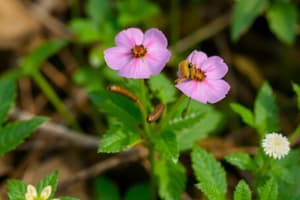Podcast
Questions and Answers
Which term correctly describes non-living components of an ecosystem?
Which term correctly describes non-living components of an ecosystem?
What type of species interaction occurs when both organisms benefit?
What type of species interaction occurs when both organisms benefit?
Which trophic level includes organisms that produce their own food?
Which trophic level includes organisms that produce their own food?
How much energy is typically transferred to the next trophic level in a food chain?
How much energy is typically transferred to the next trophic level in a food chain?
Signup and view all the answers
Which statement best describes an invasive species?
Which statement best describes an invasive species?
Signup and view all the answers
What is the main reason Myxoma became less effective in controlling rabbit populations?
What is the main reason Myxoma became less effective in controlling rabbit populations?
Signup and view all the answers
Which of the following is NOT considered an abiotic factor in an ecosystem?
Which of the following is NOT considered an abiotic factor in an ecosystem?
Signup and view all the answers
What human activity is primarily responsible for the enhanced greenhouse effect?
What human activity is primarily responsible for the enhanced greenhouse effect?
Signup and view all the answers
Study Notes
Ecosystems & Components
- Ecosystems include biotic (living) and abiotic (non-living) components interacting.
- Biotic factors include plants, animals, bacteria, and other organisms.
- Abiotic factors include sunlight, water, soil, and other non-living elements.
- Ecosystems can vary, such as a forest compared to a rock pool.
- Key terms include biosphere, ecosystem, biotic, abiotic, and habitat.
Organism Interactions
- Living things interact in many ways within ecosystems.
- Interactions include collaboration, mating, competition, and symbiosis.
- Symbiotic relationships include mutualism (both benefit), commensalism (one benefits, the other unaffected), and parasitism (one benefits, the other harmed).
- Predator-prey relationships affect population sizes over time.
Impact of Invasive Species
- Invasive species disrupt ecosystems, causing harm.
- Invasive species are organisms introduced to new environments.
- Biological control attempts to use living organisms to control pests.
- Examples of invasive species impact include those in Australia.
- Natural selection influences the effectiveness of introduced organisms like the Myxoma virus on rabbits.
Energy Flow in Ecosystems
- Energy flows through ecosystems through trophic levels (producers, consumers, apex predators).
- Only about 10% of energy transfers to the next trophic level.
- Key terms include herbivore, carnivore, biomass, apex predator, and decomposer.
Human Impact on Ecosystems
- Human activities negatively affect ecosystems.
- The enhanced greenhouse effect increases CO2 emissions and causes damage.
- Deforestation and pollution are examples of human-caused ecosystem disruption.
- A growing human population puts increasing pressure on ecological systems.
Studying That Suits You
Use AI to generate personalized quizzes and flashcards to suit your learning preferences.
Related Documents
Description
Test your knowledge on ecosystems and the complex interactions between organisms within them. This quiz covers biotic and abiotic components, types of interactions, and the impact of invasive species. Challenge yourself to identify key terms and understand the delicate balance of ecosystems.




